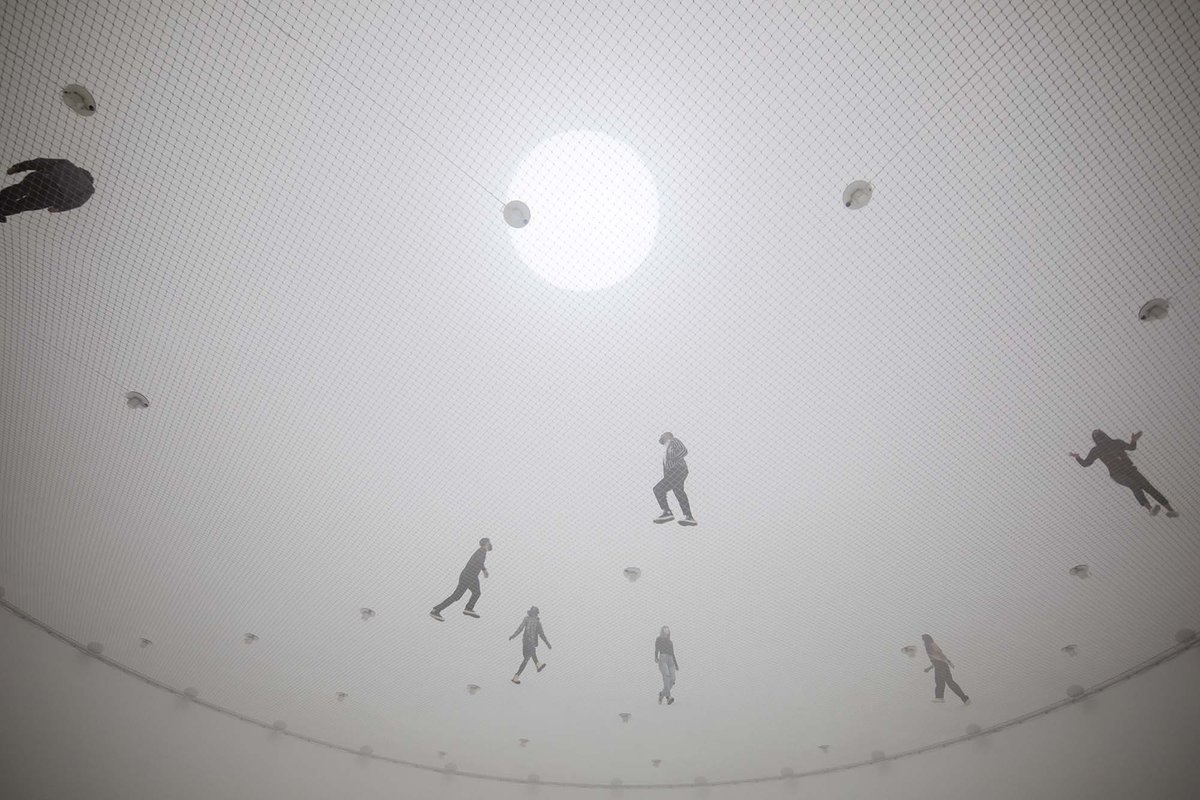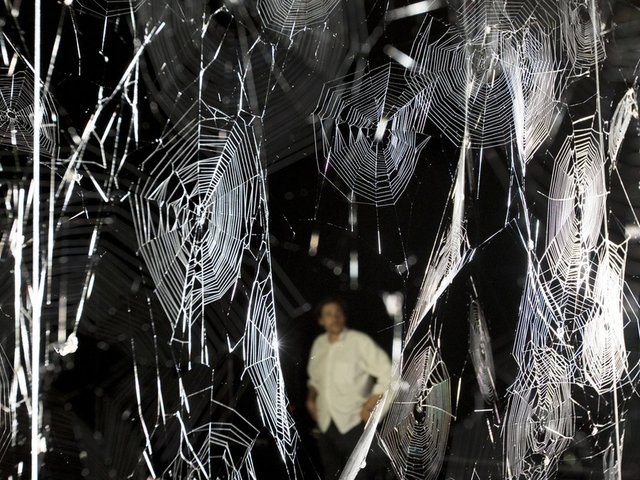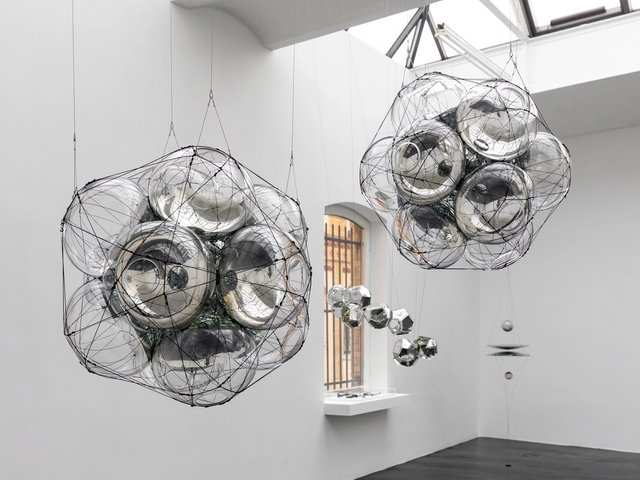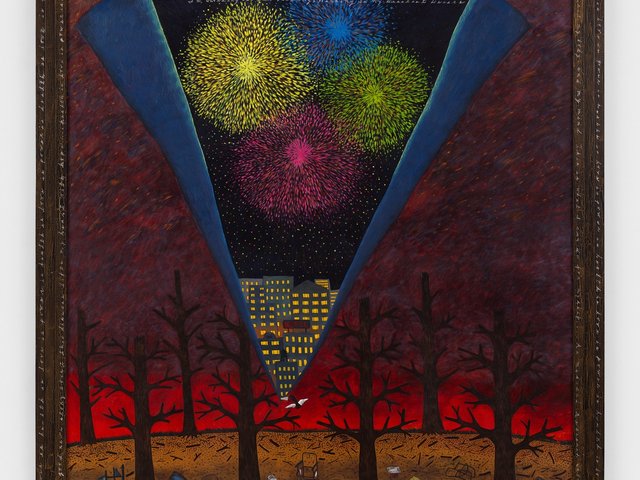A new exhibition of works by artist and activist Tomás Saraceno invites viewers to rethink climate change and environmental justice by focusing on some of the nonhuman entities and elements that surround us, including spiders, their webs, air and the particles of matter we cannot see. Encompassing three quarters of The Shed, Particular Matter(s) is Saraceno’s first major survey exhibition in the US.
The show expands upon Saraceno’s community projects Aerocene, devoted to interdisciplinary pursuits of a post-fossil fuel life, and Arachnophilia, a research-driven initiative that engages in spider studies from the perspective of their webs. Included in the exhibition is Aerocene’s large-scale, ongoing installation Museo Aero Solar (2007-present). Made from colourful, repurposed plastic bags, some of which contain drawings and messages, the sculptural work floats in the air, kept aloft with heat directly from the sun and without the use of fossil fuels.
The Arachnophilia project celebrates spiders and the possibilities of interspecies collaborations. Its community of spiders and caretakers, or diviners, create living, silken architecture that form spider web sculptures, which Saraceno refers to as “spider/web” to emphasize the webs as an extension of the spiders. Displayed at The Shed in glass vitrines in completely dark rooms with bright lights illuminating each spider/web, the sculptures are intricate, visually stunning and underline the fragility of the spider ecosystem.
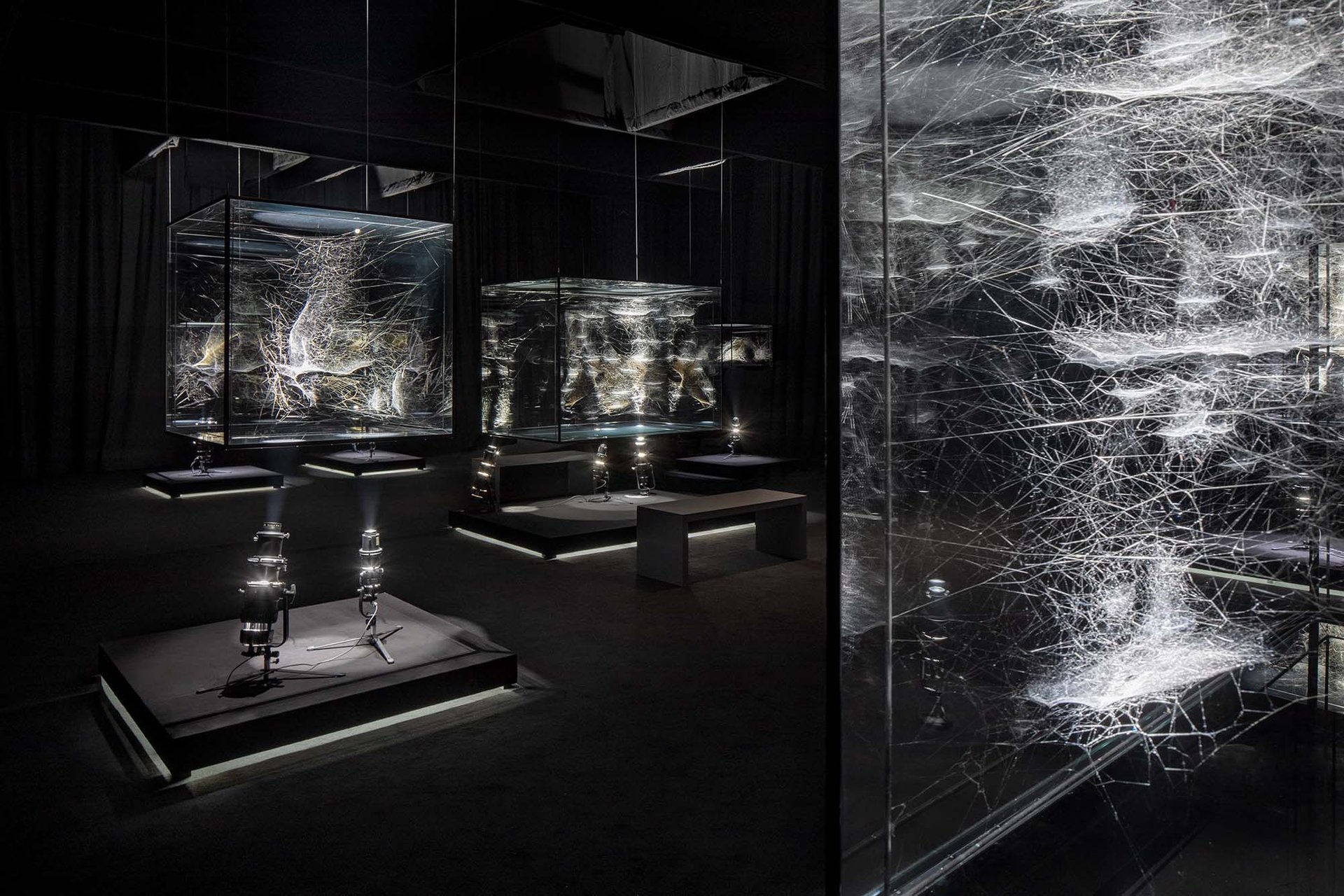
Tomás Saraceno, Webs of At-tent(s)-ion, 2020 Photo: Nicholas Knight. Courtesy the artist; spider/webs; Tanya Bonakdar Gallery, New York/Los Angeles; and Neugerriemschneider, Berlin. Photo courtesy The Shed
“Saraceno presents the necessity to reevaluate how we perceive and operate in the world and what to expect from it, which he achieves through interconnected, non-hierarchical collaborations across the human and nonhuman,” says Emma Enderby, The Shed’s curator-at-large. “The air and the particles that define it, spiders and their webs, and our visitors are all protagonists.”
The idea of air as a protagonist is apparent throughout the exhibition as Saraceno engages with issues of air quality and environmental justice. In the work Particular Matter(s) (2020), a beam of light placed around eye level projects across a pitch black room and illuminates millions of tiny particles floating in the air. The viewer walks through the seemingly dusty light, which heightens their awareness of the usually invisible matter in the air we breathe. Experiencing this piece right after viewing the pristine, tenuous spider/webs is a humbling reminder that all ecosystems are interconnected, fragile and subject to the same environmental issues, including air quality.

Tomás Saraceno, A Thermodynamic Imaginary, 2020 Photo: Nicholas Knight. Courtesy the artist; Tanya Bonakdar Gallery, New York/Los Angeles; and Neugerriemschneider, Berlin
A highlight of the exhibition is the monumental, multisensory, immersive experience Free the Air: How to hear the universe in a spider/web (2022), commissioned to fill The Shed’s a 17,000 sq. ft interior courtyard. Taking the form of a spherical sculpture 95 ft in diameter, the installation contains two interior wire mesh nets, one suspended at 12 ft and the other at 40 ft. The installation requires a separate ticket, and visitors pick between the upper and lower levels to experience the work.
Starkly contrasting the near total darkness of most of the rooms in the exhibition, the domed walls, walkways, and nets of Free the Air are bright white and bathed in an ethereal light. On the 12 ft high level, rising mist amplifies this otherworldly feeling. Visitors on the higher level look down into the mist from the upper net, which shakes and bounces with every movement. Those on the upper level are not permitted to bring any objects, including cameras or phones, a welcome invitation to fully immerse oneself in the installation. Once visitors are sitting or lying down, the light suddenly dims to black and Saraceno’s eight-minute-long experience begins.
“Unheard voices become felt vibrations in this arachnid concert in four movements. The first movement of the concert is a quiet period, providing an opportunity to detect subtle signals from subsurface seismic sources that would have been concealed in noisier times,” says Saraceno, referring to the vibrations that shake throughout the net. These vibrations were created from recordings of the Earth, including the movement of air particles and the spider/webs on view in the exhibition.
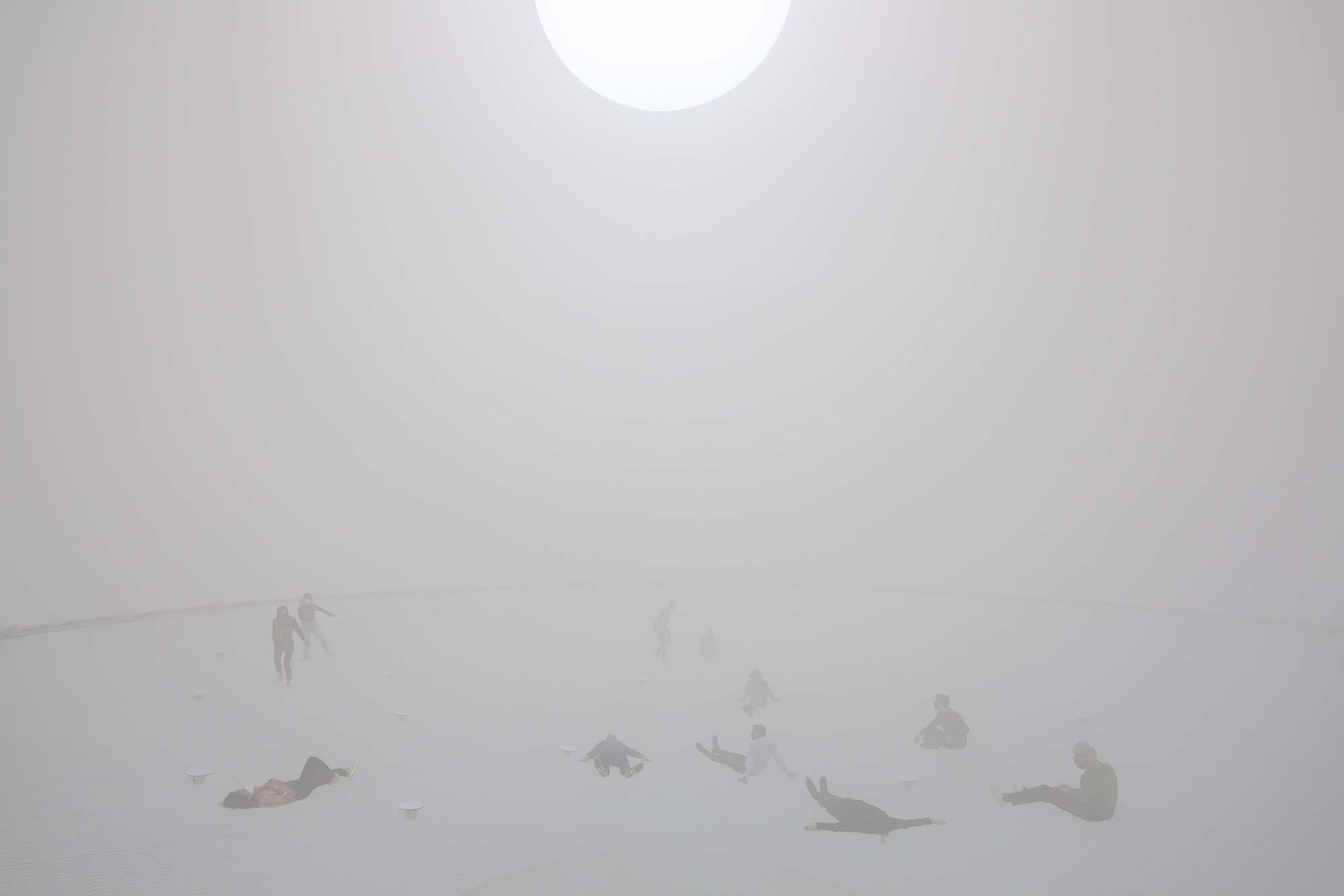
Tomás Saraceno, Free the Air: How to hear the universe in a spider/web,
2022 Photo: Nicholas Knight. Courtesy the artist and Tanya Bonakdar Gallery, New York/Los Angeles; Neugerriemschneider, Berlin; Andersen’s, Copenhagen; Ruth Benzacar, Buenos Aires; and Pinksummer Contemporary Art, Genoa. Photo courtesy The Shed
Saraceno describes the sounds that follow as “an aria from Grandmother Spider, played by a solo Trichonephila clavipes, as she plots and maps her web of life”. He adds, ”The rhythm of vibrating spider/webs—more audible since the pandemic-affected reduction of anthropogenic seismic noise—invite visitors to extend their senses towards new forms of embodied cognition.”
Coinciding with Particular Matter(s) is a series of public programmes with Columbia University’s Climate School and Studio Tomás Saraceno that further explore key issues of climate change and environmental justice.
Saraceno’s note on “new forms of embodied cognition” is perhaps the key takeaway from the show. Allowing nonhuman elements to give us a new sense of awareness is a reminder of the interconnectivity of all species. Even the things we cannot see are part of our ecosystem, and to protect one body, we must protect all bodies.
- Tomás Saraceno: Particular Matter(s), The Shed, until 17 April. Tomás Saraceno: Silent Autumn, Tanya Bonakdar Gallery, until 26 March.


